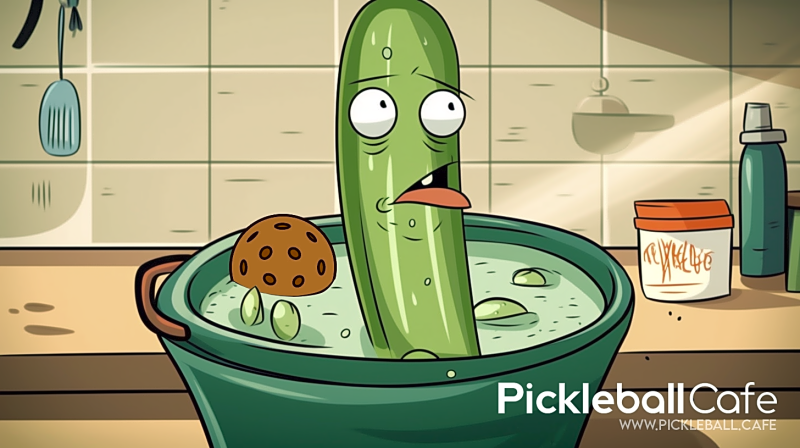It's not entirely clear why it's called the "kitchen", but may have been
taken from shuffleboard, which has a "kitchen" or "10-off" area.
The rulebook does not mention "kitchen" - it only refers to the area as the
"Non-Volley Zone". So referees will often train themselves to refer to it
only by the correct name, or the acronym, "NVZ".
When you first start playing pickleball, the wealth of unique terminology may seem a little daunting.
One term you'll likely hear often is "the kitchen". Despite the sport's culinary-sounding name, the
"kitchen" isn't a place to whip up a quick meal during a match. Instead, it refers to the non-volley
zone – a seven-foot space on either side of the net where players cannot volley the ball. But how did such
an odd term find its way into pickleball?
In the early days of pickleball, the sport was a humble, family-friendly pastime developed by a
few Bainbridge Island families near Seattle, Washington. The game, invented in 1965, was
designed as a way to entertain the children, but quickly the adults found the game enjoyable
as well. Over time, rules were established, and the game we know today began to take shape.
The non-volley zone was created to prevent players from executing smash volleys right at
the net, a move that could be potentially dangerous and disruptive to the casual, fun, and
social nature of the game. It's a crucial part of pickleball strategy and one of the features
that make it distinct from tennis and other racket sports.
But why call it "the kitchen"? The origin of this peculiar term is somewhat hazy and intertwined
with pickleball lore. There are a couple of theories that try to explain how this term came about.
Theory 1: "In the Soup"
The first theory is rooted in the old phrase "in the soup", used when someone is in trouble.
As players realized that lingering in the non-volley zone often led to losing rallies, they
jokingly referred to it as being "in the soup". This phrase supposedly evolved into "the kitchen"
over time, a similar context of a hot, trouble-filled area.
Theory 2: the "Dill Pickle" Connection
The second theory is tied to the somewhat disputed origin of the game's name.
According to one story, the game was named after the Pritchards' dog, Pickles, who loved to
chase stray balls and then hide in the bushes, like a pickle in a pickle jar. Drawing a parallel,
the term "kitchen" could be viewed as an extension of this food-themed humor. The non-volley
zone was a place where players found themselves "in a pickle", so it was fondly and
humorously referred to as "the kitchen".
Theory 3: Shuffleboard
In shuffleboard, the kitchen is an area where players disks start. At the
opposite end, there is another 10-off area where, if your disks end up,
your score is reduced by 10. That's a very abbreviated explanation, but
shows that in both sports, "the kitchen" is a place where you can be penalized
and don't want to be.
While we may never know the exact origin of the term "the kitchen", what we do know is that
it adds a flavorful twist to the language of pickleball, which is a reflection of the
sport's playful and inclusive character. As players continue to 'stay out of the kitchen'
or 'get into the kitchen' depending on the situation, they're not just adhering to a rule -
they're participating in a tradition that's as uniquely charming as the sport itself.
So, whether you're new to the sport or a seasoned player, next time you step onto the court,
remember that the "kitchen" is more than just a zone. It's a nod to the game's history, its
sense of fun, and the community spirit that pickleball brings to players around the world.
Happy playing!

Pickleball Addict
Pickleball Cafe Referee
Asked on
Nov 12th, 2022




